Imagine stepping outside your back door and plucking crisp lettuce, vibrant tomatoes, and aromatic herbs straight from your own garden for tonight’s dinner. Whether you’re just beginning your gardening journey or have a seasoned green thumb, growing a salad garden offers a delightful blend of satisfaction and self-sufficiency. In our fast-paced world, cultivating your own fresh produce isn’t just a trend—it’s a rewarding endeavor that reconnects you with nature and nourishes your body and soul.
In this article, you’ll discover the essential steps to transform a patch of soil into a thriving salad garden brimming with flavor and nutrition. We’ll guide you through selecting the best seeds, understanding the ideal growing conditions, and mastering the art of harvest, ensuring your garden flourishes from season to season. Along the way, we’ll share tips and tricks to overcome common gardening challenges, making the process as enjoyable and fruitful as the harvest itself. So, roll up your sleeves, grab your gardening gloves, and let’s embark on this verdant adventure together.
Select Ideal Salad Greens
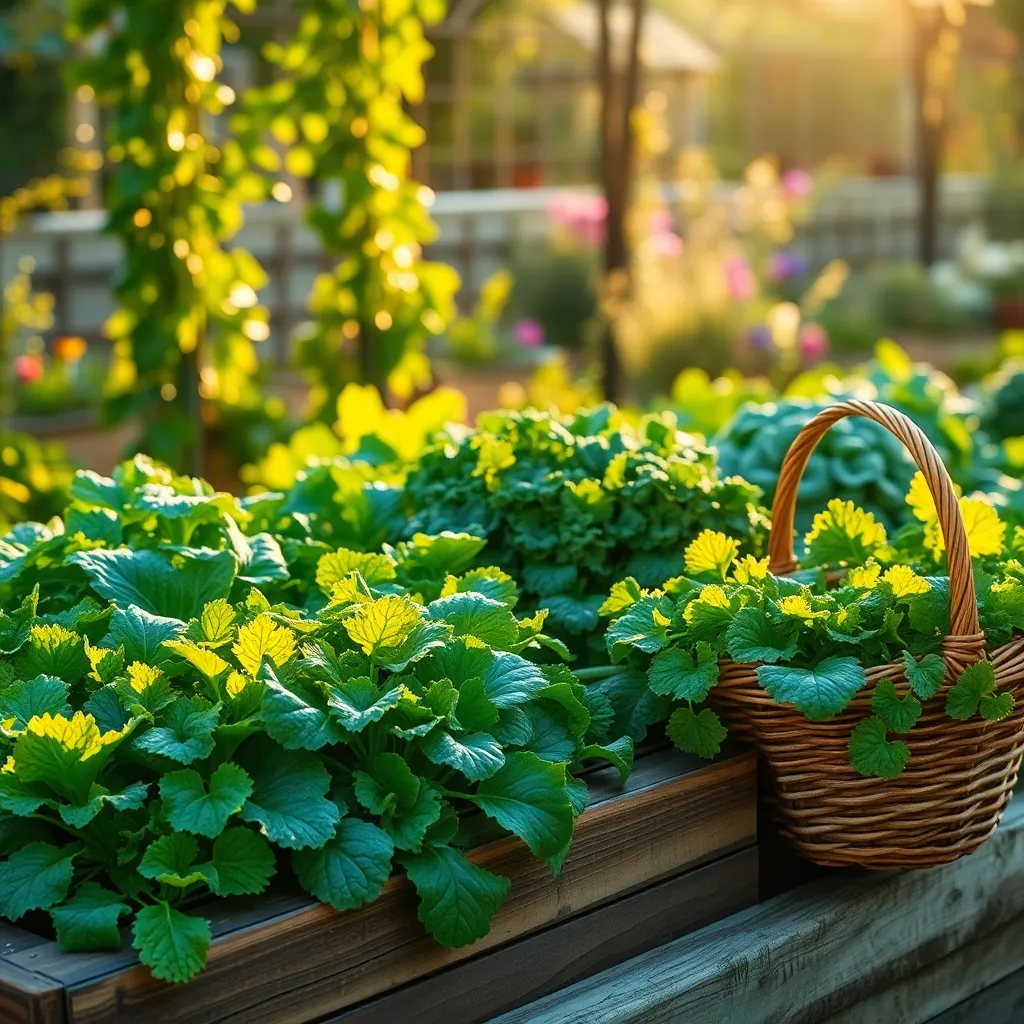
To begin selecting ideal salad greens, consider starting with easy-to-grow varieties such as lettuce and spinach. These greens thrive in a range of climates and are perfect for gardeners just starting out.
Ensure your soil is rich in organic matter to support the growth of lush, flavorful greens. A well-draining soil mix with plenty of compost will provide the necessary nutrients and moisture retention.
For more experienced gardeners, try incorporating a mix of radicchio or arugula for a bit of spice and texture. These greens require similar growing conditions but add a delightful complexity to your salad garden.
Plant your greens in a spot that receives at least six hours of sunlight daily for optimal growth. If you are in a particularly hot climate, consider providing some afternoon shade to prevent bolting.
Water your salad greens consistently, aiming to keep the soil evenly moist but not waterlogged. Regular watering helps maintain the crispness of the leaves and prevents stress that can lead to bitterness.
Experiment with succession planting to ensure a continuous harvest throughout the growing season. By sowing seeds every two to three weeks, you can enjoy fresh greens without interruption.
Consider using row covers to protect your greens from pests and extend the growing season slightly. These covers can help retain warmth during cooler nights and keep insects at bay.
Prepare Garden Bed Soil
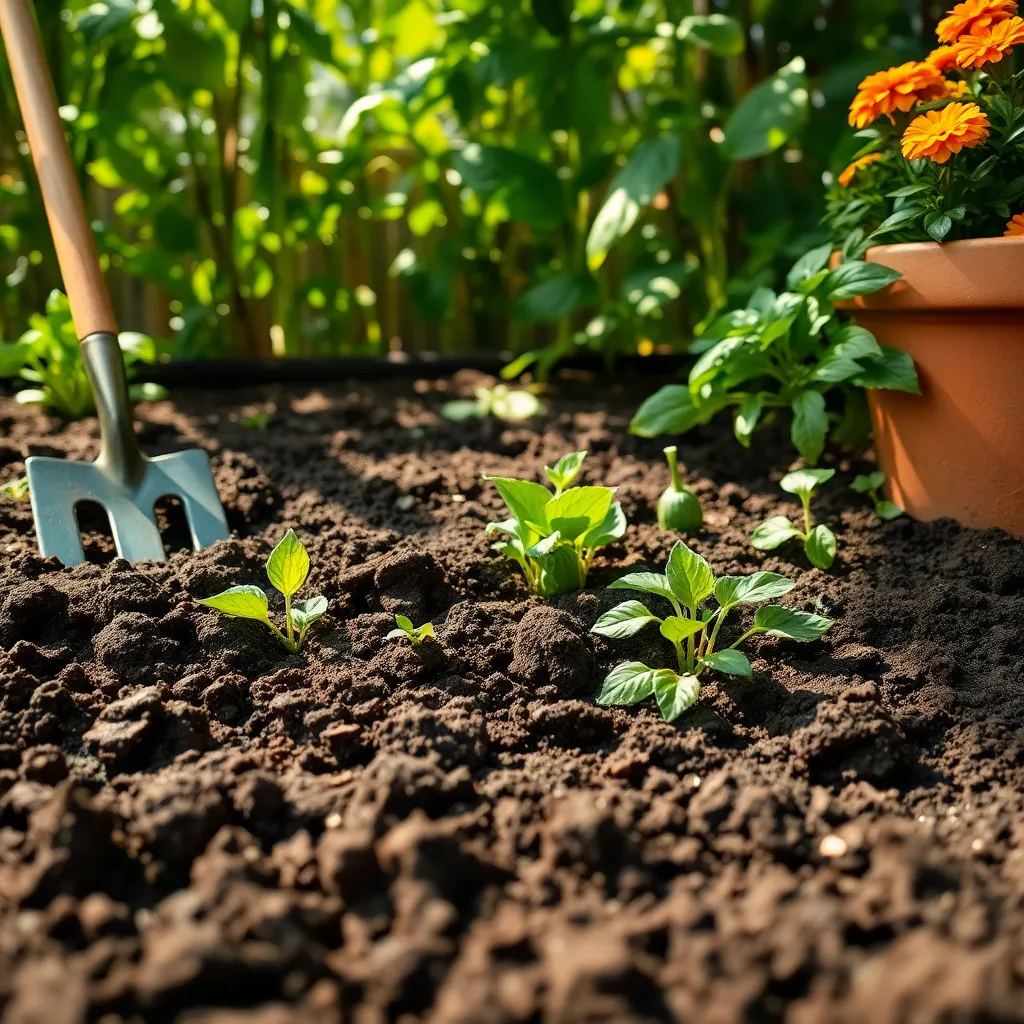
Preparing your garden bed soil is a crucial step for a thriving salad garden. Start by clearing your garden bed of any weeds or debris to provide a clean slate for your plants.
Next, test the soil pH to ensure it falls between 6.0 and 7.0, which is ideal for most salad greens. You can purchase a simple soil testing kit online or from a local garden center for accurate results.
Once you’ve assessed the pH, amend the soil with organic matter such as compost or well-rotted manure. This will not only enrich the soil with nutrients but also improve its texture and drainage capabilities.
For those looking to take their gardening to the next level, consider incorporating perlite or vermiculite to enhance soil aeration. These amendments help maintain a healthy balance of moisture without waterlogging, which is essential for salad greens.
Water the soil thoroughly after amendments to ensure everything is well-integrated. Allow it to settle for a few days before planting, providing an optimal environment for your salad greens to flourish.
Sow Seeds in Rows
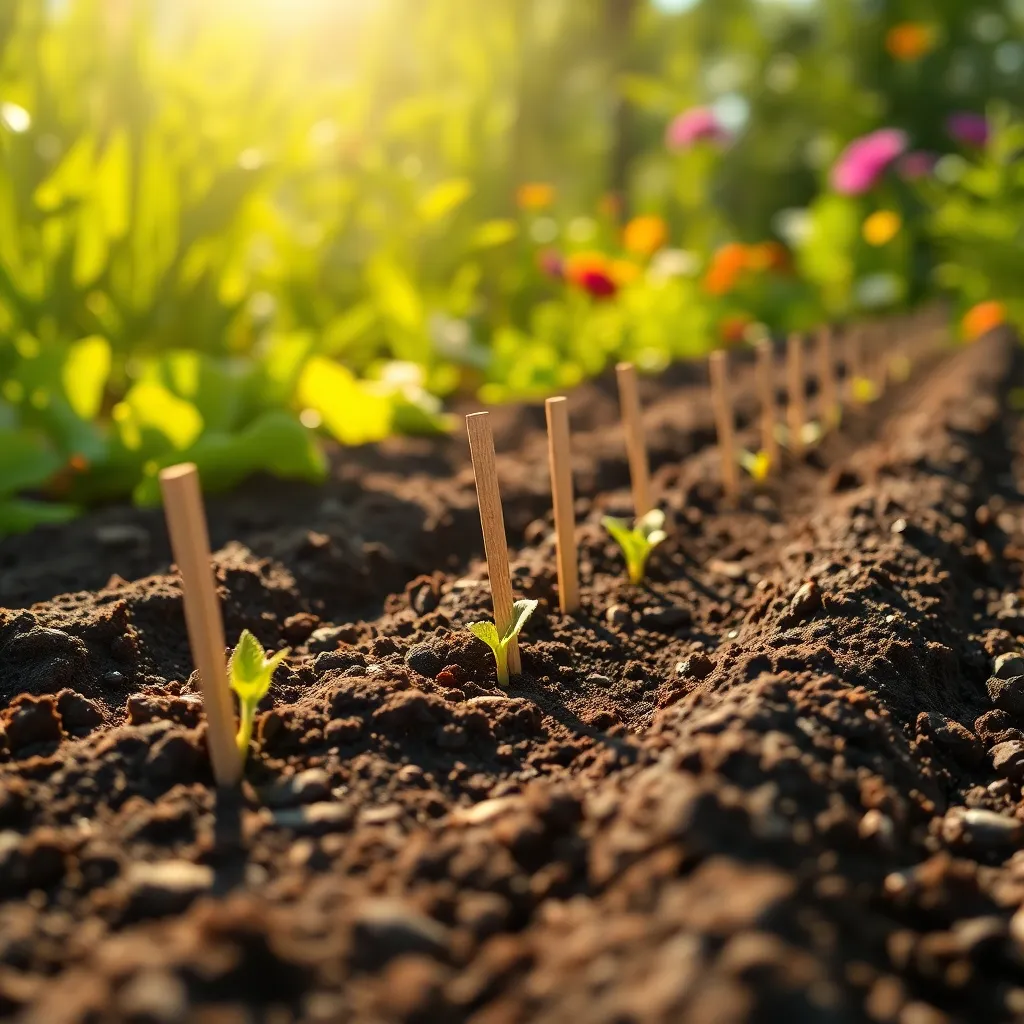
After preparing the garden bed soil, it’s time to sow your seeds in neat rows for organized growth. Using a hoe or a garden trowel, create shallow trenches in the soil about 1/4 to 1/2 inch deep, which is ideal for most salad greens such as lettuce and spinach.
Spacing is crucial to ensure each plant has enough room to thrive. Plant seeds roughly 1 inch apart in the row, and space your rows about 12 inches apart to allow for easy weeding and harvesting.
For beginners, using a seed packet as a guide can help determine the optimal planting depth and spacing for each type of seed. Advanced gardeners might prefer experimenting with companion planting by interspersing seeds of different varieties to maximize space and improve plant health.
After sowing, cover the seeds lightly with soil, ensuring not to compact it too much, as this could hinder growth. Water gently but thoroughly to keep the soil consistently moist, which is vital for germination but avoid waterlogging, as this can cause seeds to rot.
Water and Fertilize Regularly
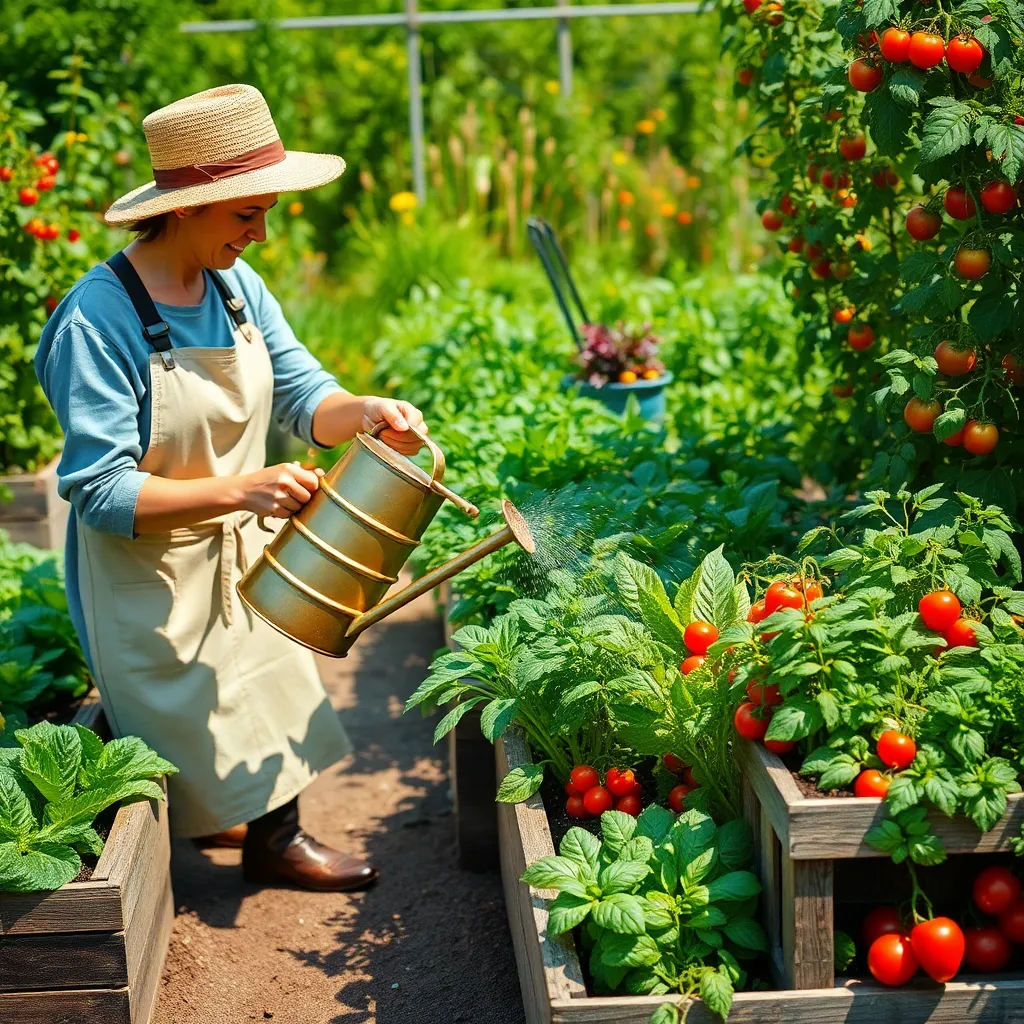
Ensuring your salad garden thrives requires both consistent watering and appropriate fertilization. Water deeply and regularly, aiming to keep the soil consistently moist but not waterlogged, as this helps prevent stress on the plants.
Use a watering schedule that suits your climate; in most areas, this means watering early in the morning or late in the afternoon to minimize evaporation. For best results, consider installing a drip irrigation system or using soaker hoses to deliver water directly to the roots, reducing the risk of disease from wet foliage.
Fertilizing your salad greens is equally important for robust growth. Begin by using a balanced, slow-release fertilizer at planting time, which provides essential nutrients as your plants begin to establish themselves.
As your plants grow, supplement with a liquid fertilizer every two weeks to maintain nutrient levels. Opt for an organic option such as fish emulsion or compost tea, which can enhance soil health while feeding your plants.
Monitor your garden regularly to check for signs of nutrient deficiencies, such as yellowing leaves or stunted growth. Adjust your fertilization strategy as needed, being careful not to over-fertilize, which can lead to excess leaf growth and reduced flavor in your salad greens.
Harvest Lettuce and Herbs
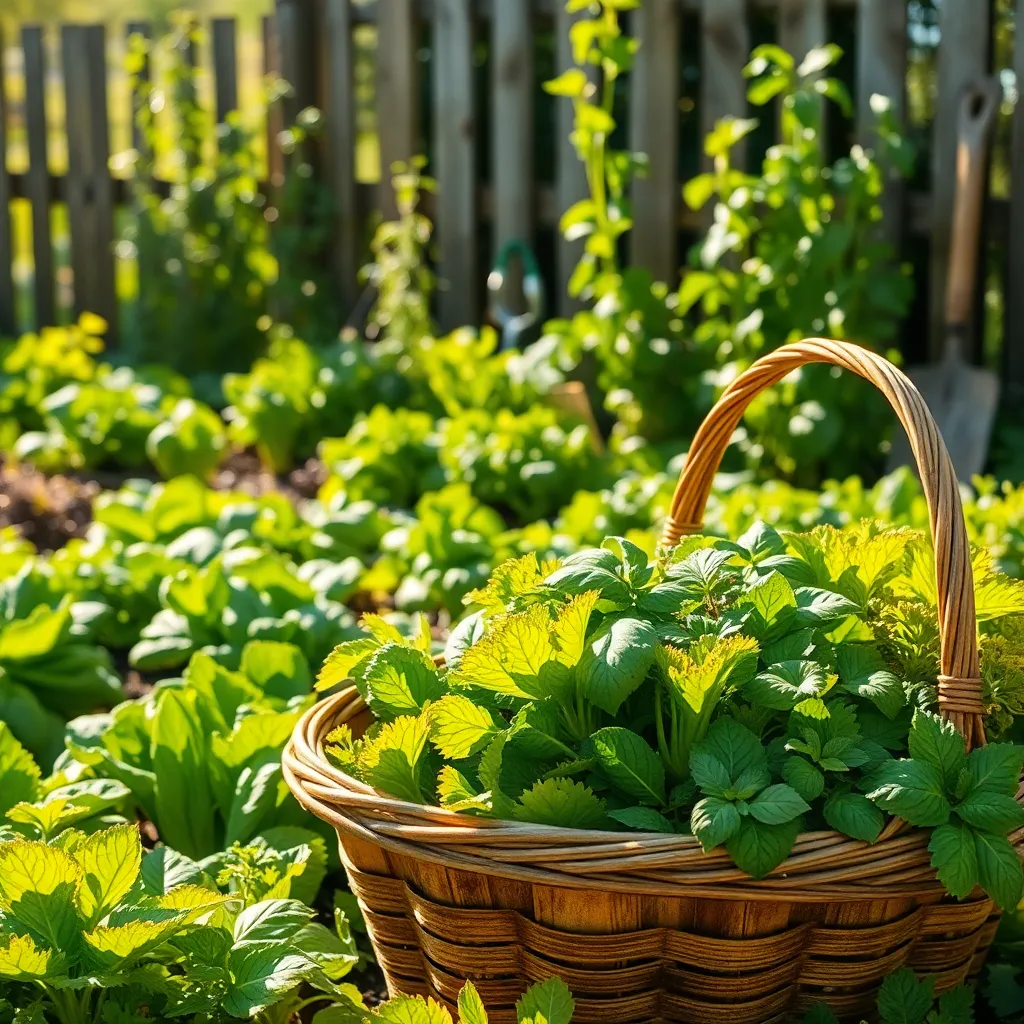
Once your lettuce reaches maturity, it’s time to enjoy the fruits of your labor. Harvesting lettuce regularly encourages new growth and prevents the plant from bolting, which can lead to bitter leaves. For leaf varieties, pick outer leaves first, allowing the inner leaves to continue growing. This method, known as “cut and come again,” is ideal for ongoing harvests.
Consider picking lettuce in the early morning when leaves are crisp and full of moisture. Avoid harvesting during the heat of the day, as the sun can cause wilting. Use a sharp knife or scissors to cut the leaves, minimizing damage to the plant. Ensure you leave at least an inch of growth above the base to facilitate regrowth.
Herbs like basil, parsley, and cilantro can be harvested similarly. Pinch or snip the top leaves regularly to promote bushier growth and prevent flowering. Focus on harvesting just above a leaf node to stimulate further development. The more you harvest herbs, the more they thrive.
For optimal flavor, harvest herbs before they flower. The essential oils, responsible for the herbs’ aromatic qualities, are most concentrated just before flowering. When drying herbs, bundle small groups together and hang them upside down in a cool, dry place. Preserving herbs this way allows you to enjoy home-grown flavors year-round.
As you harvest, keep an eye on your plants for any signs of pests or disease. Regularly check the undersides of leaves, where aphids and other insects might hide. Promptly remove any affected leaves to maintain the health and productivity of your salad garden. Stay proactive in your garden care to keep your plants thriving.
Conclusion: Growing Success with These Plants
In “How to Grow Your Own Salad Garden,” we explored five essential relationship concepts: effective communication, shared goals, nurturing growth together, embracing patience, and celebrating small victories. By communicating openly, you cultivate understanding; setting shared goals aligns your paths; nurturing growth fosters a thriving connection; patience allows time for development; and celebrating victories strengthens your bond.
As an actionable next step, choose one shared goal to focus on today, whether it’s planning your next date night or starting a new hobby together. This small action can reinforce your commitment to nurturing your relationship.
Remember, building a strong partnership is like tending to a garden—it requires ongoing attention and care. Save or bookmark this article as a resource to revisit these insights and keep your relationship flourishing.
Looking ahead, your commitment to these principles will lay the foundation for enduring success and happiness in your relationship. Embrace the journey with confidence and warmth, knowing each step forward is a step toward a more fulfilling connection. Let’s grow together, one leaf at a time.

